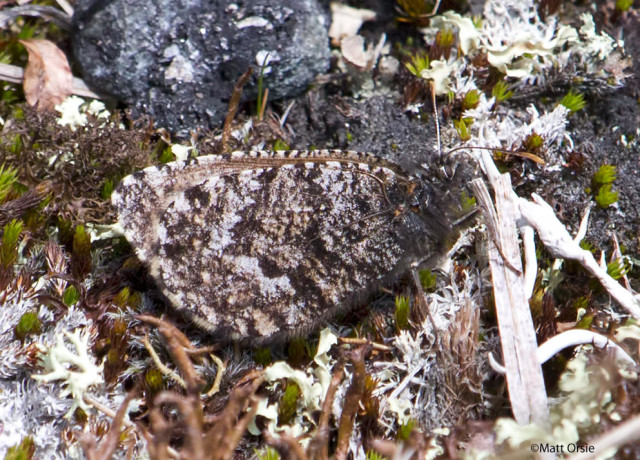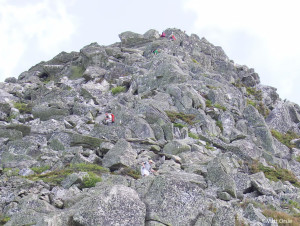The next leg of the northeast trip was to go the New Hampshire and look for any Commas that may be out early in a second brood. As it turned out not too many were seen at all as we seemed to be mostly between broods. Eastern Comma, Gray Comma, Green Comma, Hoary Comma and Question Mark should be flying by August however. Another target species was Bog Fritillary. We spent a day in extreme SW Maine visting a couple of bogs. We may have flushed a couple of candidates but never saw any that could be confirmed. So, it looks like another trip perhaps next season is already on the agenda. Other notables on this leg of the adventure were Bog Copper, Baltimore Checkspot, Harris’ Checkerspot, White Admiral and Canadian Tiger Swallowtail. Upon arriving in Gorham, NH it was of course raining with thunderstorms. The passing of a cold front kept us from going to Mt. Washington for two days as the mountain was “In the Clouds” or very windy. The winds on Saturday the 2nd averaged 50-70 mph with gusts to 94 mph. Winds were still too strong on Sunday. It looked like Monday the 4th was going to offer a decent chance to look for our second Acrtic of the trip, Melissa Arctic (or White Mountain Arctic). Most folks probably know that Mt. Washington is the highest of a complex of high, above tree line peaks called the Presidental Range. Mt. Madison, Mt. Adams, Mt. Jefferson, Mt. Clay and Mt. Monroe are others in the immediate vicinity. Until recently Mt. Washington was known as having recorded the highest wind gust (non tornadic) on Earth at 231 mph. This occured on 4-12-1934 during a storm. The highest temperature ever recorded there is 72 degrees! Being the first clear to partly cloudy day in 5 days many visitors were taking advantage of the relatively benign conditions (50 degrees, 30 mph sustained winds). We drove up the auto road around 11am which can be a white-knuckled event in and of itself to the summit. The Summit House and Cog Railroad (running since 1869) were packed with visitors.
Click on images for larger size
Views were stunning in all directions. Here is a view to the north:
We spent most of our time between 5,600 ft – 6,000 ft looking for a Melissa Arctic. After two hours I was about 75 yds away from Barry when he yelled my name at the top of his lungs. I barely heard anything due to the winds and the sock cap I had on. I rushed over to find he had located a hunkered down Melissa Arctic. It uses the same host plant (Bigelow’s Sedge) as the Polixenes Acrtic on Katahdin. Over the next hour and a half we located 3 more. Wind blown and a little tired we finally made the long 7+ mile drive down the auto road (all in low gear).
A lot of time and effort paid off and we drove home happy campers only to think about next year’s opportunities.
























